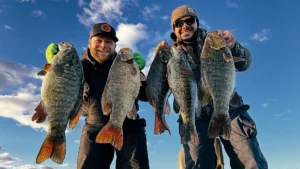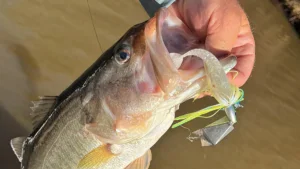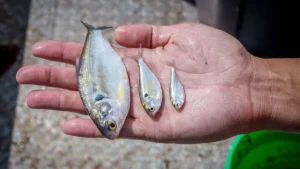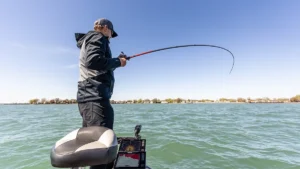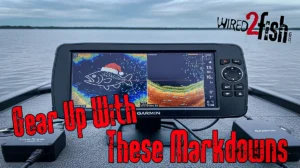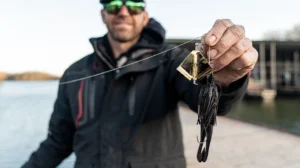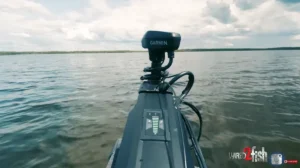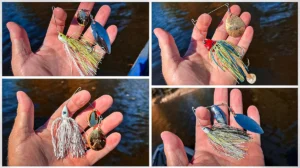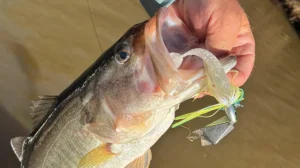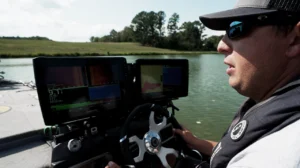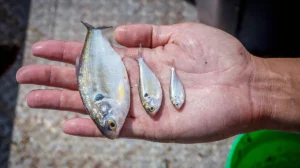A lot is going on in the month of May. Depending on where you are in the country, the bass could be just starting to bed or the spawn may have wrapped up more than a month ago. If you’re in the deep South, the post-spawn push out to ledges is full throttle, while up north on the Great Lakes, the bass are still pre-spawn.
Regardless of where you are in the country, let us point you in the right direction by letting you know what we’re throwing in May.
Editor-in-Chief Joe Albanese will chime in with some tips for the Northeast, and we’ll have a couple of touring pros and a top notch YouTube angler offer up their tips for what’s working on fisheries in their neck of the woods.
What Bass are Biting in the South

From South Texas up through Tennessee, the bass are primarily interested in moving to deeper water in May. Deep is a relative term in the South, with shallow and deep water in Florida only differentiated by a couple of feet.
The farther north you go in the Southeast region, “deep” becomes more like 10 to 20 feet. Most bass will be looking for this deeper water in May, with a few staying shallow to hang around in the shade and chase spawning bluegill — and there’s a bait that can be used to target them all.
Casting Jig/Skipping Jig

For the late spawners that are now early post-spawn fish, the first few docks and brushpiles in the 10-foot-depth range can be dynamite in May. It’s a great idea to keep a casting jig on deck that can be dragged through a brush pile and skipped under a dock.
Keep the trailer a little smaller and the jig a little lighter to create a less intimidating profile while still allowing the bait to fall slowly. The V&M Pacemaker Skipping Jig is a good choice here. Pair it with a smaller trailer, like a Strike King Rage Tail Menace Grub.
Shakey Head

May is one of the best months in the South for fishing a Rapala Crush City Janitor Worm as well. The bass are beat up from the spawning process and not all that eager to feed sometimes. A simple trick worm rigged on a jighead is a slow moving, non-threatening meal that a bass can slurp up without much effort.
Try these in the same mid-range brush where you’d throw a casting jig. Shakey Heads also work well around docks, on points, and anywhere that bass are trying to sit still and recuperate.
Wacky Rig

Staying on the finesse side of things, you’ll still want to keep a wacky rig around. This one is a big player in April in the South, and it keeps on producing in May, too. The late spawners that are still guarding frys in early May will respond better to a wacky rig than anything else. Post-spawners sometimes stage under bushes and docks before moving deep. These fish are hard to reach with most baits; a wacky rig skips easily and it’s super subtle, making it the perfect solution.
Drop Shot

Easing back out a little to the mid-range brush and even deeper, a drop shot is a great choice for May in the South. This rig gets to the bottom quickly, making it easy to target deeper fish that are around structure or brush in 10 to 20 feet of water, whether they are under the boat or out around it.
Deep-Diving Crankbait

May is perfect for deep-diving crankbaits. The first fish are hitting the ledges and deep water holes as the water starts to warm. Rising air temps have homeowners running their ACs, which in turn has the power companies generating power, pushing water through the dams. All of this is a recipe for bass to pull out to ledges, set up shop, and feed heavily on forage that is washing right to them.
The Strike King 5XD and 6XD crankbaits are among the best ever made if you want to try this out.
Popper, Popping Frogs, Frogs

Not all bass head out deep as soon as the spawn is done. There’s just a bit of shad spawn left in May, which keeps some bass near shallow cover like seawalls, grass lines, and docks. Then, the bluegill begin to spawn and continue to do so through the month. At the same time, mayflies start to hatch.
Taking all of this into consideration, you’re going to want to keep a popping frog, frog, or a popper on deck all May long. All of these baits work great anytime you’re around bass that are feeding shallow on baitfish.
Buzzbaits, Toads, Whopper Ploppers, Choppos

Similarly, you’re going to need a buzzbait, buzz toad, Whopper Plopper, Berkeley Choppo, or some combination of all of these. These topwaters allow you to cover more water than you can with a popper or frog.
In May, I like to take a buzzbait or Choppo and go down the bank in search of bream beds. These beds can be spread out with hundreds of yards in between them. Knowing that bass often travel from bed to bed, I can intersect their paths with one of these reeling-style topwaters. Then, when I get to a concentration of beds, I’ll usually slow down to the frog or popper, or even a wacky rig.
Glide Baits

A glide bait is another fantastic lure for May in the South. These baits are known for catching big bass in general, but you can actually catch pretty good numbers on them in May, too. Look for fish around shallow docks, rocks, brush, laydowns, and grasslines, and work the bait back and forth slowly as tight to the cover as you can. You’re bound to get a few breathtaking bites, and maybe even catch your biggest bass of the year.
Jake Whitaker’s May Tackle Box in North Carolina
(Bassmaster Elite Series Pro)
The month of May has an array of things going on. You’ve got fish already starting to go out deep, but me being a shallow water guy, I tend to start looking for bream beds in short pockets off the main lake where you’ve got those late spawners that are still hanging around.

May is a time where everything is moving and everything is warming up. You still have a bunch of fish staying shallow, you have fish moving deep, but I’m looking for areas that are going to hold those fish that are still staying shallow, especially bream beds.
A small prop bait, a wacky rig Senko, and a frog are my main deals whenever I’m keying on bream beds. Again, I like to focus on those shorter pockets at the mouths of creeks, main lake pockets, and other places where fish collect when they’re thinking about going deep, so they don’t have far to go once they commit.
A lot of those bigger ones like to hang out close to that deep water, but that’s not always the case. Sometimes, you can go to the very back end of a long creek and still catch some of those fish, but for whatever reason, larger populations of bigger fish, especially in May, tend to be a little bit closer to that deep water getting ready for summer.
Fishing boat docks with a regular half-ounce skipping jig can be a deadly effective way to catch some big fish in May. But given a choice, I’d always focus on bream beds with a small prop bait, a wacky rig, and a regular popping frog.
Once you find an active bream bed, you have to get a feel for what those fish want. I’ve seen them bit on the first cast over them with a topwater, and I’ve seen them be real finicky, requiring finesse presentations with a wacky rig.
Brent Ehrler’s May Tackle Box for Southern California
(Major League Fishing and Bass Pro Tour Angler)

We’re kind of in that spawn-post-spawn phase here in Southern California. The fish don’t get on the bream-bed pattern that they do back East. You can obviously catch them that way, but it’s really not like Lake Guntersville. There, you can catch a 30-pound bag on maybe three bream beds, and that’s it. You’ll have schools of fish that hang out around one bream bed. I don’t feel like they do that in California.
They go from spawning to out a little bit deeper and hang in that 5-to-15-foot zone outside of spawning areas, in my experience.
The one bait I like the most, just because you can cover a ton of water with it, is a Lucky Craft 1.5 DD DRS; it’s a good 10-foot-deep running crankbait. I throw it on 10-pound Sunline Sniper fluoro with a 7-foot, 2-inch Daiwa Elite Series rod that I designed for them and a Tatula Elite Reel.
I always swap the hooks out for Gamakatsu G Finesse medium heavy. It’s a real sticky hook, and I feel like I lose less fish with that hook than I do with any other treble. I look for some sort of structure outside of where they like to spawn.
In Southern California we’ve found lakes fluctuate a lot, so they will be low and then the water comes up and now there’s a bunch of bushes in the water. That’s very common. It’s common around the country, but we have a lot of fluctuation. It’ll move up and down 15 to 20 feet like nothing.
What happens is, that stuff grows up and then the water fills and now you have tons of structure. So you’re like, “Where do I even start?”

First, hit the clean spots. If you find an area that doesn’t have bushes, you’ll likely find fish there, too.
Second, look for rocks. You don’t want bushes, you want bushes and rocks — bigger boulders or little rock piles mixed in around the bushes. That’s where bass will kind of circle and call home.
Then, hit the edges. If there is any kind of an edge in the brush where it stops, you know that’s going to be your grassline, essentially; that’s gonna be your edgeline where they like to hide. So, I’ll try to find those areas and crank and cover water.
If you can find those places with a higher concentration of fish, you can pick a few off with a crankbait. After that, I’ll use a dropshot with a wacky-rigged Thin Senko, which is a really good bait for a wacky rig.
I’ll also use a G-Finesse Weedless Stinger — a hook I designed for Gamakatsu. I use the weedless one that has the weedguard so that I can wacky rig it and still throw it around brush and not get snagged as much.
I’ll use a size 4 on that thin Senko — a green pumpkin, watermelon, anything that’s kind of a natural color. I can throw it around those clean spots, I can throw it around the rock that’s mixed in with the brush, or I can fish it along that edge of that brushline and catch those fish.

A Roboworm works great as well. I’ll Texas rig that on a drop shot with a 1/0 Rebarb Hook and a 1/4-ounce Ark Tungsten weight. I’ll throw it on my Tatula Elite Series drop shot rod. It’s a 7-foot, 1-inch medium-heavy rod with 12-pound Sunline to 8-pound Sniper fluorocarbon leader.
I’ll also sometimes use a Neko rig with the same rod, reel, line — same everything — but I’ll use either a No. 4 or a No. 2 Stinger Weedless Wacky G-Finesse with an Ark Tungsten Nail Weight. I’ll throw that with the Yamamoto Sensei Worm. That has become a standard for me in the last year. It’s a really good worm on a drop shot, a Neko rig and a weightless wacky.
Sometimes they like that on the bottom. Sometimes they like the drop shot; I go back-and-forth. I will always have both on the deck. So, crankbait to find the areas where there are more fish, then I can slow down with the drop shot or the Neko rig. Start with the crank bait, that 1.5 DD DRS, then throw the worm, then finish with the crankbait and then move on to the next spot.
Ben Nowak’s Michigan May Bass Tackle Box
(YouTuber/Smallmouth Guru)

May is really a month of transition from the early pre-spawn into full blown pre-spawn, and even the actual spawn in parts of the state. On Lake Saint Clair, you are going to see them start spawning around that full moon in May.
You’re going to start to see those fish get on bed and start spawning later in May, that goes for all of our inland bodies of water.
But for the most part, in the northern part of Michigan, you’re going to start to see fish really be in their full-blown pre-spawn stages. So, you’ll find them around shallow flats on isolated pieces of cover.
When I go after smallmouth, I look for those big boulder rock fields just outside of where they’re going to spawn — their staging areas or main-lake points — that lead back up in the spawning bays.
I look for largemouths that are starting to push shallow, getting ready to get up on bed. Those largemouths in 52 to 58 degree water temps are really going to be biting. Later in the month, they’re going to start getting on bed and spawning.

I look for smallmouths to get on bed when temps are around 58 degrees; for largemouth bass it’s typically 60 to 62 degrees.
From the middle of the state down, they’ll start spawning on that full moon. By Memorial Day, we can see fish on bed in most of the lower part of Michigan.
For largemouth, I use a jerkbait — typically just a standard shallow diving jerk bait — like a Booyah Flash Point or a Megabass Vision ONETEN.
I’m also throwing a jig; I really like a jig in the spring, especially if I’m up north. It’s a bigger profile and the bass are keying in on bluegill, so my go-to is a 1/2-ounce flipping jig that I make myself with Do-It molds.
If the fish get really finicky, I’ll switch to a Ned rig or a Neko rig, and then a 6th Sense Swank crankbait or Strike King Hybrid Hunter — something I can cover water with. And if I’m fishing around cover, I’ll go with a swim jig or a bladed jig, depending on what kind of cover it is.

Really, it’s about covering water and using baits that I can fish shallow cover with effectively, because that’s where a lot of these fish are going to be. Those largemouth are typically on isolated pieces of cover on flats or main-lake points leading back up into spawning bays, or really obvious largemouth staging spots.
Smallmouth are going to be full-blown pre-spawn by the first or second week of May, and they’ll be near their spawning flats and hanging around isolated pieces of cover, like boulders. People put out fish attractors in a lot of our waterbodies, and fish will get around those, too.
Keep in mind, fish will really key in on changes and transitions on the bottom — either a composition change from say gravel to sand, or when you get bigger rocks mixed into a gravel field.
And then, up on the flat, I look for dark spots, which is often just a piece of wood or grass on the bottom. Fish will be attracted to those bottom color changes, especially when they get around those shallow spawning flats.
My smallmoth baits are pretty simple: a jerkbait, a small swimbait, a drop shot, a hair jig, and a tube or a Ned rig.

For the jerkbait, I like a 110+1 if the water is deeper, or just a shallow diving jerkbait if I’m fishing shallow water flats.
For the swimbait, I go with something that’s 3 or 2 3/4 inches, like a Great Lakes Finesse Dropkick Shad or a 3-inch Spark Shad from Megabass.
When the fish get on those shallow flats and they start roaming, that’s when I break out the hair jig and cast to isolated pieces of cover and places where the bottom composition changes.
I fish a drop shot especially when bass start to lock on bed. The drop shot is a really effective bed fishing tool, but it also gets fish to bite when they’re locked down to a piece of cover.
I’ll also use a tube or a Ned rig, depending on the water clarity. For clearer water, I’m going to go with the Ned rig, since it’s just a little less intrusive. In dirty water, or on the Great Lakes in general, bass bite a tube really well.
Joe Albanese
(Wired2fish Editor-in-Chief)

Things are still a bit chilly in the Northeast, and the bass are acting like it. There’s still no evidence of bass on beds yet, but that doesn’t mean that nothing is biting. Focus shallow, 10 feet and under, and hang on. And toward the end of the month, you can start looking for bowls.
Perhaps unsurprisingly, ChatterBaits and jigs have been key so far this year. Throw these near shallow structures and hang on. Lipless crankbaits have also been shining, just be sure to tailor your retrieve to the colder water temps — these fish aren’t going to do a whole lot of chasing.
On the saltier side, swimbaits such as Savage Gear Pulse Tail Mullet, fished slowly have been producing with striped bass as the first of the menhaden have made their presence known. Z-man’s DieZel minnows fished on a jighead have also work well. It’s going to break wide open any minute now, so hang on.


